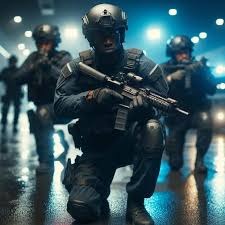In the chaotic wake of the 2025 Palisades Fire—a wildfire that devoured 23,707 acres, claimed 12 lives, and reduced 6,837 structures to rubble—one truth emerged with stark clarity: training saves lives. While firefighters battled flames and residents fled, an often-overlooked force played a critical role in mitigating disaster: security professionals whose rigorous preparation turned chaos into controlled response. Their story reveals why investing in training isn’t just about compliance—it’s about building human infrastructure capable of weathering the unimaginable.
The Foundation: Why Training Matters in Crisis Security
Security work is no longer about static guards and routine patrols. Modern threats—from climate-driven disasters to urban violence—demand adaptability, technical skill, and emotional intelligence. Training bridges this gap by transforming guards into:
- Risk interpreters: Identifying hazards like unstable debris or looters exploiting evacuation zones.
- First responders: Administering CPR, using fire extinguishers, or guiding crowds during blackouts.
- Community liaisons: De-escalating panic with empathy, as seen when trained guards calmed families separated during the Palisades evacuations.
Studies show that organizations with continuous training programs reduce incident-related injuries by 60% and legal liabilities by 45%. But the Palisades Fire tested these principles in real time, proving that preparation isn’t just theoretical—it’s lifesaving.
The Palisades Crucible: Training in Action
When the Santa Ana winds hurled embers into Pacific Palisades on January 7, 2025, security guard teams were already mobilizing. Their training protocols—sharpened by simulations of urban wildfires—kicked into gear:
1. Evacuation Coordination
Guards managed checkpoints under harrowing conditions, verifying residency with government IDs and issuing access passes to prevent unauthorized entry into danger zones. Curfews from 6 p.m. to 6 a.m. were enforced not with rigidity, but with awareness of traumatized residents’ needs. One guard recounted helping an elderly woman retrieve medications from her smoldering home: “We’d drilled for this—how to balance safety with compassion.”
2. Hazard Mitigation
Post-fire, security firms partnered with the EPA and Army Corps of Engineers to secure toxic cleanup sites. Guards trained in hazardous material protocols monitored asbestos removal and lithium battery disposal, preventing secondary disasters. Their role was pivotal: without proper containment, windblown ash could have poisoned recovery workers and residents.
3. Looting Prevention
With over 6,000 structures destroyed, opportunistic theft spiked. Trained guards used geofencing tech and drone patrols to protect vulnerable properties. In one instance, a team intercepted a group attempting to steal copper wiring from a burned-out school, leveraging conflict resolution skills to avoid escalation.
4. Community Reassurance
Security personnel became de facto counselors. At evacuation centers like the Pasadena Convention Center, guards distributed PPE and air quality monitors while guiding displaced families to FEMA resources—a dual role of protector and advocate.
READ MORE : How Rising Break-Ins Are Reshaping Local Business Survival
The Training Blueprint: What Made the Difference
The Palisades response highlighted three pillars of effective security training:
- Scenario-Based Drills
Guards rehearsed wildfire scenarios mimicking the fire’s rapid spread, including communication blackouts and medical triage. This prepared them for realities like the Getty Villa staff’s midnight vigil, where they used fire extinguishers to battle wind-driven flare-ups. - Cross-Agency Collaboration
Security firms trained alongside CAL FIRE and the LAPD, mastering unified command systems. This cohesion ensured seamless coordination during road closures and debris removal—a factor that accelerated recovery timelines by weeks. - Psychological Resilience
Programs like CERT (Community Emergency Response Team) emphasized “psychological stabilization” for survivors. When a bartender-trained volunteer encountered shell-shocked evacuees on Sunset Boulevard, he relied on CERT principles: “No platitudes—just ‘I’m here for you.’”
The Ripple Effect: Beyond the Flames
The Palisades Fire underscored training’s broader impact:
- Economic preservation: Guarded construction sites saw 40% fewer thefts, protecting $20 million in materials during rebuilding.
- Public trust: Security teams distributing N95 masks and coordinating with the Red Cross rebuilt community confidence faster than bureaucratic systems alone.
- Policy shifts: L.A. now mandates wildfire-specific training for all security firms operating in high-risk zones—a legacy of the disaster.
Conclusion: Training as the First Line of Defense
The Palisades Fire didn’t just burn homes; it illuminated the irreplaceable value of preparedness. Security guards, once seen as peripheral, emerged as pillars of resilience—proof that training transforms reactive measures into proactive guardianship. As L.A. rebuilds with fire-resistant materials and underground power lines, its greatest defense may lie in the minds and muscle memory of those trained to expect the unexpected.
For communities worldwide, the lesson is clear: Invest in training before disaster strikes. Because when the winds shift and the skies darken, readiness isn’t a luxury—it’s the difference between chaos and control.
To explore training programs that shaped Palisades’ response, visit FEMA’s CERT resources or the LA Disaster Relief Navigator for tailored recovery strategies.
